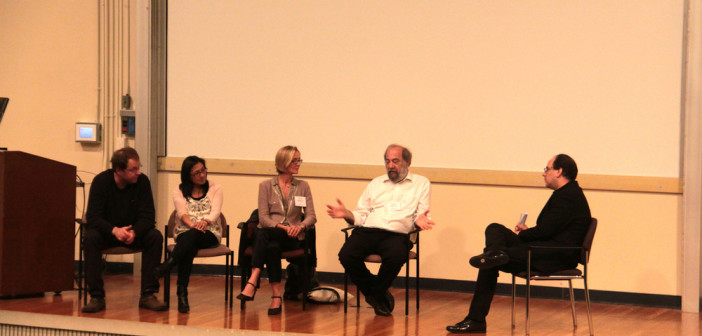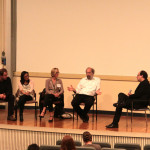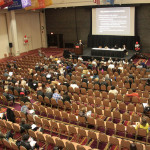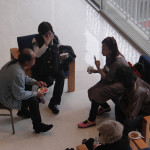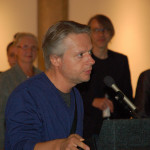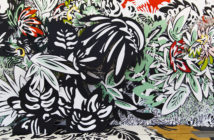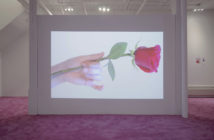Last weekend, hundreds of artists from more than 40 countries convened in Boston for the biennial TransCultural Exchange Conference. Held at Boston University, this year’s TCE, Conference on International Opportunities in the Arts: Engaging Minds, boasted 50 panels with artists, curators, writers and educators, each designed to promote dialogue between artists based in Boston and around the globe, and to develop practical skills necessary to push the boundaries of artistic practice. These panels, according the conference’s program, were "organized to encourage artists to conjure up new worlds and avenues of pursuit—to reach out not only to others around the world but also from different walks of life."
German artist and scientist Florian Dombois’s public art work, uboc No.1 & stuVi2, which consisted of a single green laser beam between BU’s Law School and Student Village Two, best illustrated this mission. Visible from the Mass Pike and along Commonwealth Avenue, the work effectively harmonized several facets of the city. Further, uboc No.1 & stuVi2 was an aesthetic illustration of how artists can fuse different disciplines in order to work. BR&S editor Stephanie Cardon interviewed Dombois while he was in town; her talk with him will be published later this year in our journal. Simple and graceful, Dombois’s uboc No.1 & stuVi2 was visible through last Sunday night.
On Friday afternoon at the MIT-hosted AICA panel, "Art as Tools for Life" panelists each presented talks on art’s role in their personal and professional lives, and, ostensibly, art’s place in contemporary life. Moderated by João Ribas, panelists included Raphael Cuir, AICA France President, Christopher French, AICA National President, Marie-Cécile Burnichon, of FRAC, and artist Annette Lemieux. Perhaps the most lucid moment in the conversation was when Burnichon observed that as a community, we need to protect artists from being co-opted into political programs. "We need to protect the artist from becoming a tool," she said.
As we’ve witnessed the growing professionalization of art making (across all disciplines) over the last few decades, this remark seems especially relevant today. It should, and is, the aim of conferences like the TCE to equip artists with the networks and systems they need to combat their commoditization within larger society.
- Photo credit: Don Mo.
- Photo credit: Don Mo.
- Photo credit: Don Mo.
- Photo credit: Don Mo.

